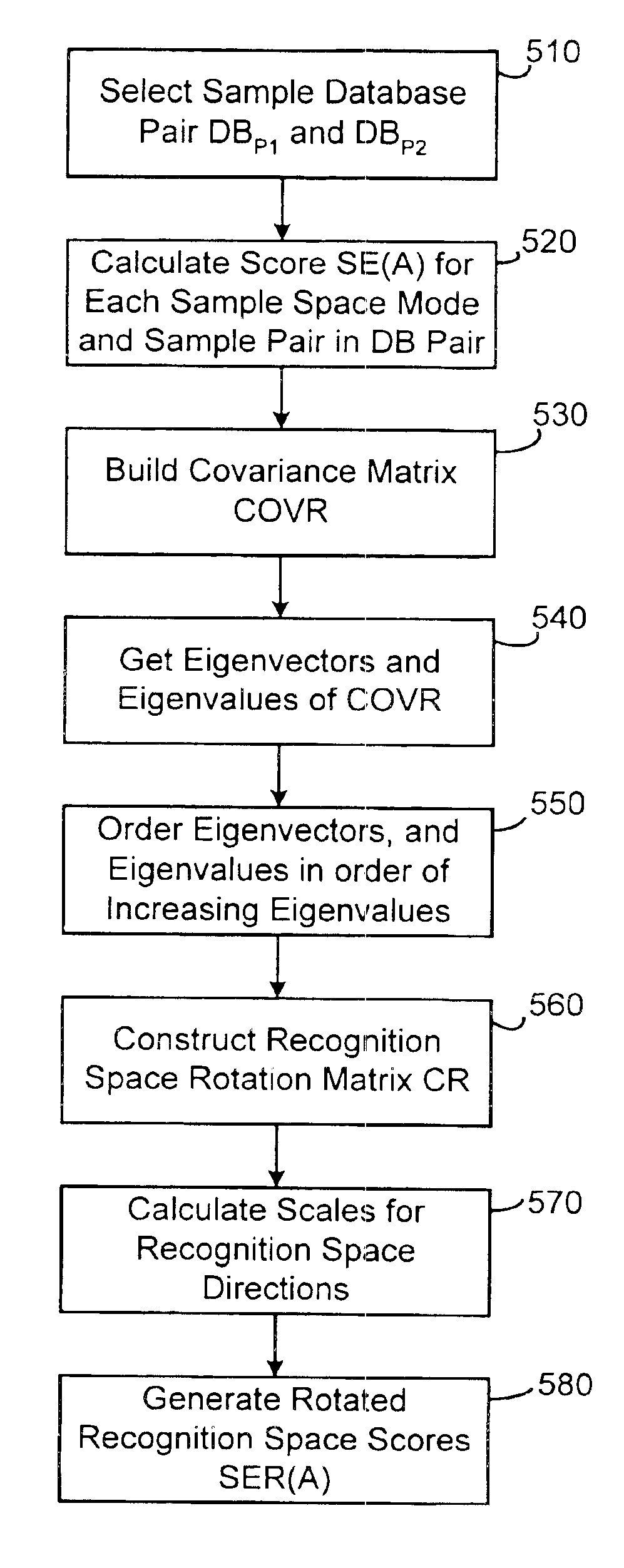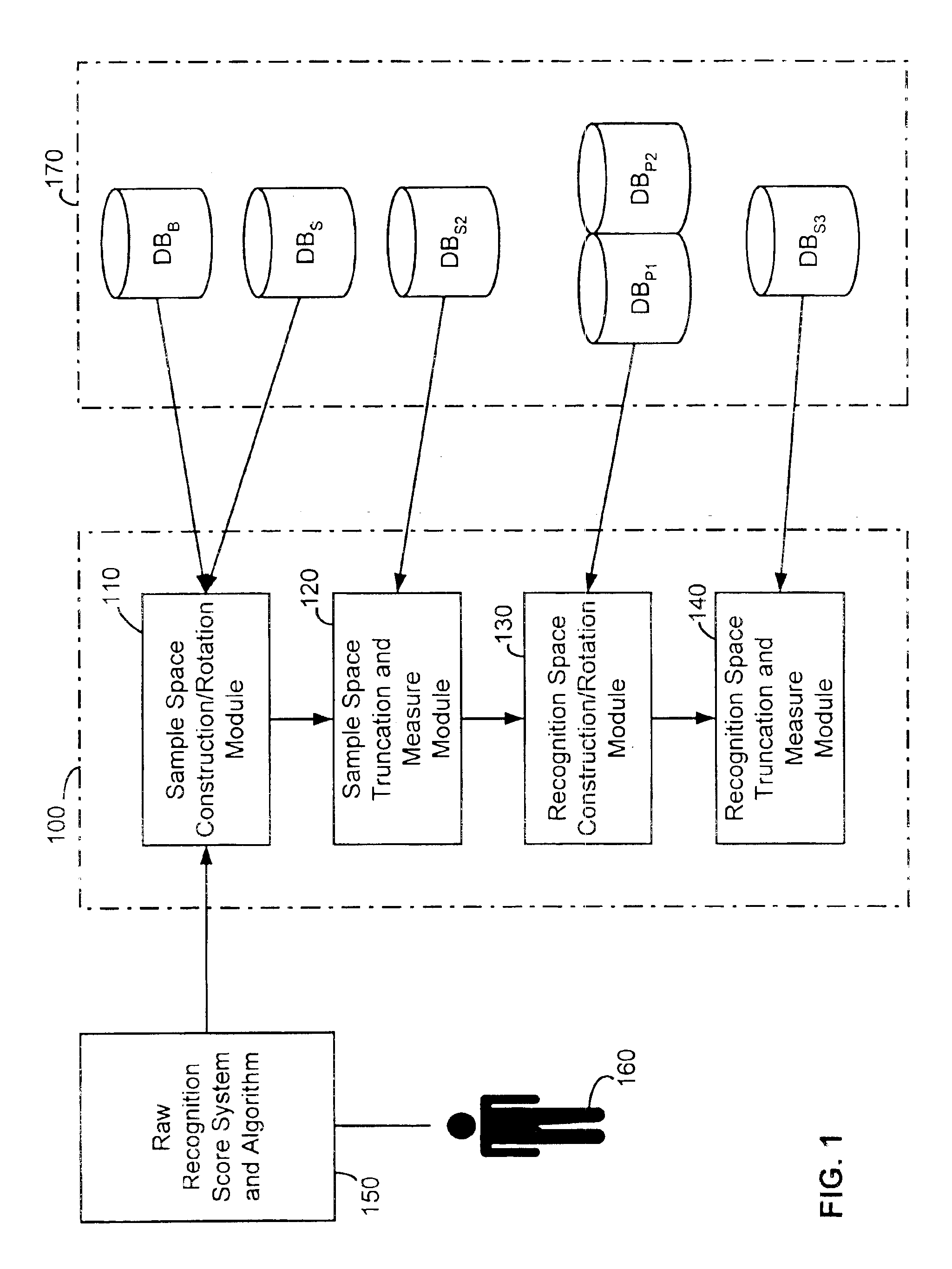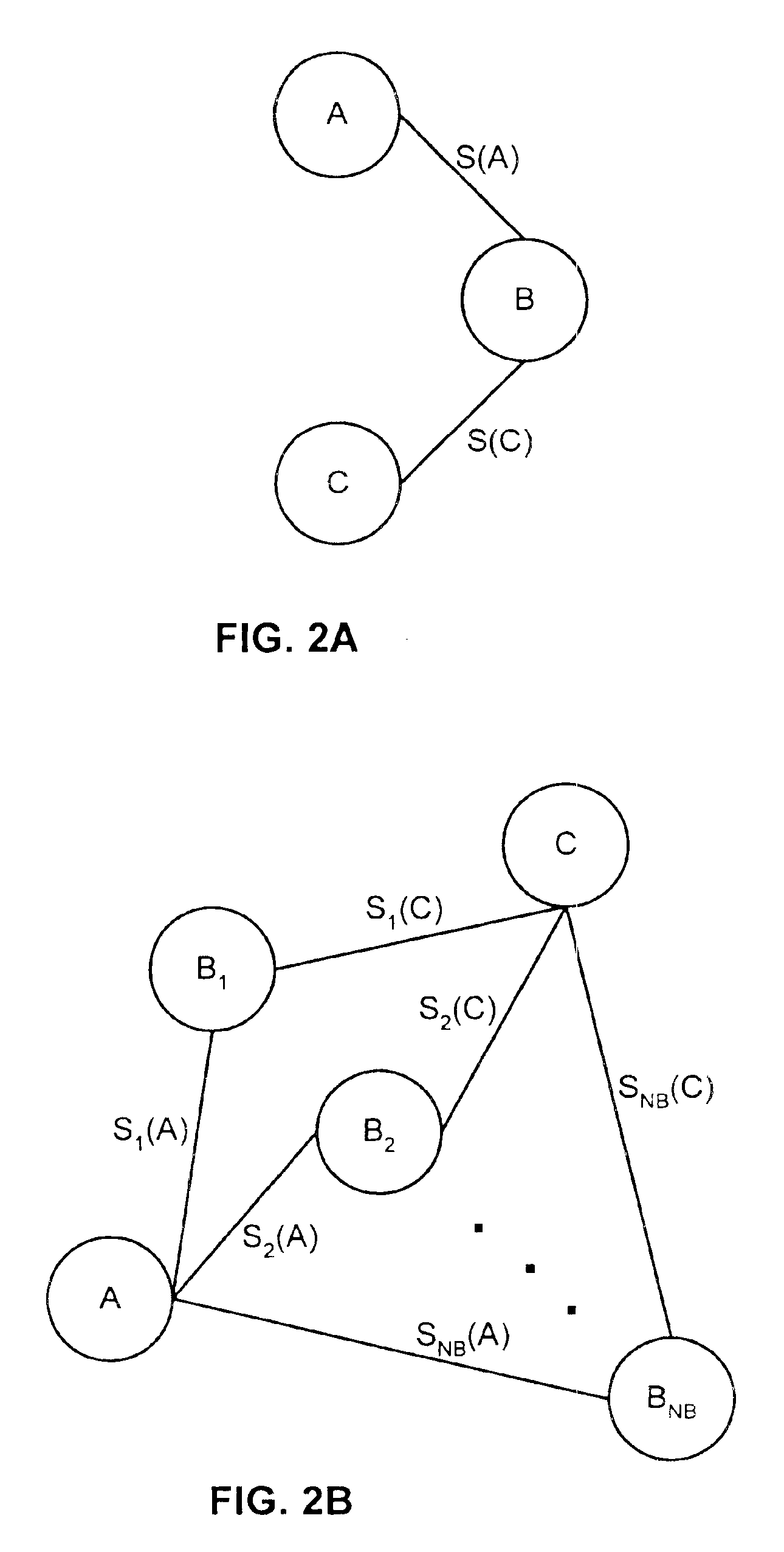Method and system of transitive matching for object recognition, in particular for biometric searches
- Summary
- Abstract
- Description
- Claims
- Application Information
AI Technical Summary
Benefits of technology
Problems solved by technology
Method used
Image
Examples
Embodiment Construction
[0027]Although the description which follows relates primarily to biometric recognition techniques such as face or fingerprint recognition, it will be appreciated that the transitive recognition method and system of the present invention may be generally extended to recognition of other types of objects or patterns.
[0028]In biometric recognition, the comparison of the data for a number of biometric identifiers does not return a Boolean (true / false) matching score when one data sample set is compared against another. Instead, the recognition algorithm returns an overlap or distance score, S, based on the notion of nearness or similarity. This is the case for face and fingerprint recognition systems, but is also commonplace in other types of object and pattern recognition systems. Since biometric scores obey a transitive property, described below, a score comparing the biometrics of different individuals may containing relevant and meaningful match information even through the individ...
PUM
 Login to View More
Login to View More Abstract
Description
Claims
Application Information
 Login to View More
Login to View More - R&D
- Intellectual Property
- Life Sciences
- Materials
- Tech Scout
- Unparalleled Data Quality
- Higher Quality Content
- 60% Fewer Hallucinations
Browse by: Latest US Patents, China's latest patents, Technical Efficacy Thesaurus, Application Domain, Technology Topic, Popular Technical Reports.
© 2025 PatSnap. All rights reserved.Legal|Privacy policy|Modern Slavery Act Transparency Statement|Sitemap|About US| Contact US: help@patsnap.com



